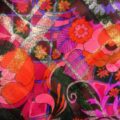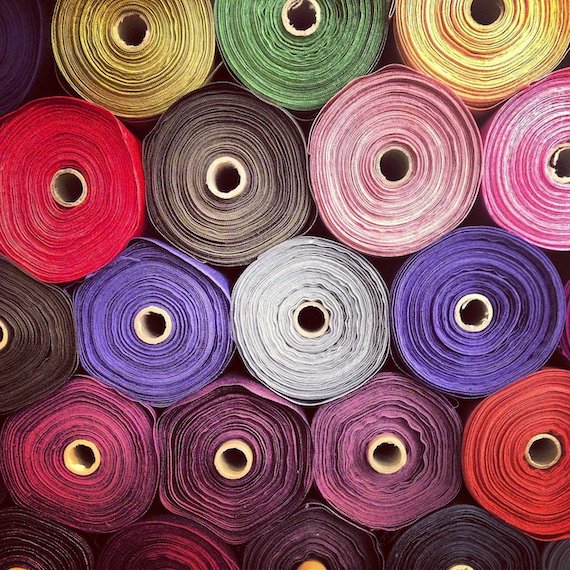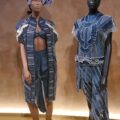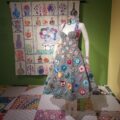Recycled clothing brands – how do they work?
May 2, 2023There are many recycled clothing brands. More are appearing all the time as companies become more eco friendly. Shoppers are demanding the option that causes the least harm to the environment. There are lots of ways that manufacturers can cut their impact and create sustainable clothes. They could use organic cotton or other natural fibres that have been grown organically and will biodegrade. Dyes and printing processes that will not harm wildlife could be used. They can use factories close to home, so that clothes are not shipped long distances. And they can use recycled fabrics, or recycle existing clothes or even fishing nets for recycled fashion for men and women.
Manufacturing clothing creates a lot of waste. When clothing is cut out of the fabric, there are always bits left over, because fabric is rectangular and most clothing is all kinds of shapes. Those scraps of fabric are usually tossed to the factory floor in the dust, and later thrown out, either going to landfill or burnt. Tons of textiles are wasted this way in the fashion industry.
But clothing brands are realising that this fabric can be used. If the pieces are big enough, they can be good for smaller items, eg hats or knickers. If it is too small, the fabric can be shredded into fibres which can be spun into new thread, and re-woven into new fabric.
Recycled Clothing Brands – Deadstock Fabric

Fabric. Image copyright free via Flickr user Ruth Hartnup.
Many fashion brands also find that there is a lot of fabric left over on the roll. They will order an amount of fabric, say for example 1000 metres. They plan to make 400 garments from that, calculating 2.5 metres are needed per garment. But in fact, each garment takes only 2 metres of fabric each, so they have 200 metres left. Instead of making 100 more garments, they think, “Well, we only needed 400, and we have that so that’s OK”. It might also be that at the end of every roll is a bit of fabric not big enough to cut the garment they had planned, but still sizeable. They put the excess fabric into storage and probably forget about it.
But now, smaller companies such as Lucy & Yak are re-discovering their old fabric stocks. They are using them to make small runs of new (or old) designs. It’s called using dead stock. It is a little more trouble to do things this way, because you still need to photograph the item, upload it to the website and write a description. But you only have a 100 or so, so it will sell out in minutes. Then you must do it all again for the next small batch. If you have bigger quantities, you need do it less frequently. However it is definitely worthwhile to use up all your old stocks of fabric rather than having it sitting in a warehouse somewhere. After all, warehousing also costs money.
Luxury Deadstock Fabric
There are also companies who buy the end of rolls from big brands. These can include luxury fabric like cashmere coat fabric from luxury brands like Chanel. They then sell these to smaller companies who only need a few metres to make their designs, or even home dressmakers.
Recycled Clothing Brands – Recycled Fabric
Many other companies make clothing from recycled fabric. There are specialist companies that make high quality recycled polyester and recycled cotton. Companies then buy it by the roll or metre, in the same way that they buy their other fabrics. It used to be rather embarrassing for a company to use it, as it was regarded as a rather cheap option. Now they proudly label it so.
Recycled fabric can be made from virgin fabric off-cuts, as in the example above. Or it can be made from old clothes that have been given to a charity shop or collection point. There is an advantage to using fabric offcuts that have never been worn as they are clean, new fibres, free from contamination.
Sorting and Shredding
The fabric is sorted according to type and colour, for example, blue cotton denim with no added stretch or other fibres. This is then mechanically shredded into huge piles of fluff. The fluff is then spun back into thread, and that is re-woven into new denim fabric. The colour of the fabric will be blue, but inevitably a little uneven, so it is dyed again. The result looks like brand new fabric. Sometimes the old fibres are mixed in with new. Sometimes they are 100% recycled.
Recycled Clothing Brands – Recycled Polyester
A fairly new innovation is to re-use plastic bottles to make polyester. There are so many plastic water bottles discarded in the sea or in landfill it makes sense to collect as many as possible and use them for something. It turns out that when melted, the plastic can be stretched out into filaments fine enough to create a polyester strand. This is called mechanical recycling. It’s a fairly simple process. But it can only be done a few times before the plastic is too brittle to be stretched out again. Another way, which is more complicated but creates a better-quality yarn, is chemical recycling. This is when, yes, you guessed it, chemicals are used to cause the plastic to melt down at a molecular level.
Either way, this is then spun into thread and knitted into polyester fabric. But however it is made, polyester is still not biodegradable. It also releases little fibres every time it is washed, which make their way into the food chain. Recycled polyester is still a far better option than brand new. Even fast fashion brands are using this fabric now.
Recycled Clothing Brands – Re-using Fabric
Another way to use old clothes is to re-use the actual fabric. This can be a little bit tricky, because clothes are made out of many smaller pieces of different-shaped cloth, sewn together to make the required shape. Usually, you don’t want a new garment with a big seam visible on it, so each piece of clothing is cut apart along the original seams. This is labour intensive and leaves you with fairly small pieces of fabric. In the old days, when most people sewed at home, it was very standard to re-use clothing in this way. A worn-out adult woman’s dress, with its long skirt, was perfect to be remade into a smaller child’s dress. Nowadays, although we do have a fashion for maxi-dresses again, there are not many clothes with enough fabric in them to make something like a child’s dress.
Vintage clothing like jeans, for example, can be made into a hat. The other option is to use the fabric to patch other worn-out jeans. The repair will most likely be visible, but that is part of the charm. There is a whole culture of visible mending, where you use un-matching fabric or thread to fix holes in your clothes. They deliberately highlight the repair. It shows that they garment has history and the loving care it has had in in being mended. It is similar to the Japanese concept of kintsugi, where a broken bowl is glued together and the repair painted in gold powder, to show how precious it still is.



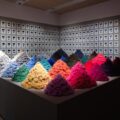

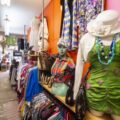
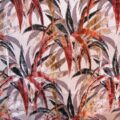
![Azzedine Alaïalogo. By alaia.fr (alaia.fr) [Public domain], via Wikimedia Commons](https://www.blue17.co.uk/wp-content/uploads/2017/11/Azzedine_Alaïa__Alaia__corporate_logo-120x120.png)

![LFWMAW18, By Philafrenzy (Own work) [CC BY-SA 4.0 (https://creativecommons.org/licenses/by-sa/4.0)], via Wikimedia Commons](https://www.blue17.co.uk/wp-content/uploads/2018/02/London_Fashion_Week_Mens_Strand_January_2017_02-120x120.jpg)
